Different people channel their creative drives in different ways. They may immerse themselves in encouraging other people, gardening, designing, building or doing other activities.
Some people are creative addicts and need to get their fix early in the day. They may almost say something like the following.
My name is …
I am a creative addict. I am addicted to creating something every day.
Sometimes I want to paint a picture. Sometimes I want to write an article. Sometimes I simply want to do something that helps other people.
Creating something helps me to feel more in charge of the day. I feel more relaxed and then things come more easily.
Doing creative things helps me to feel fulfilled. Not being creative leads to feeling frustrated.
Over the years I have learned to live with my addiction. Now I try to manage it, one day at a time.
What are you creative drives? What are the pluses and minuses of following these drives?
The pluses may be that you get a feeling of deep satisfaction and joy. You use your talents to give something to other people and get a sense of accomplishment.
The minuses may be that the drive manages you, rather than you manage it. There may also be downsides for other people.
You can, of course, learn how to channel your creative drive. Taking these steps can help you to build on the pluses and manage the minuses.
If you wish, try tackling the exercise on this theme. This invites you to do the following things.
Describe the creative drives you have that are almost like addictions.
Describe the specific pluses and minuses of following these creative drives.
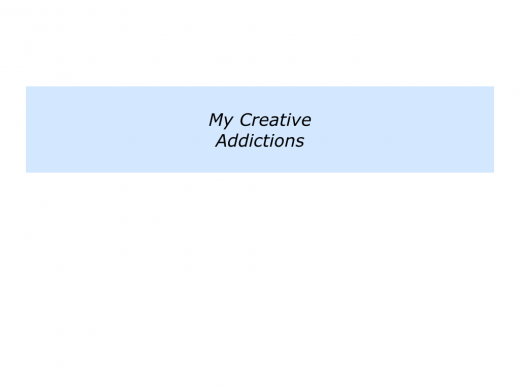
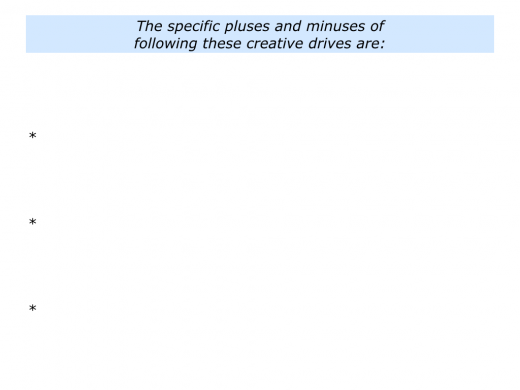
So how can you manage your creative addictions, rather than let them manage you? One approach is to follow a certain rhythm each day.
Some writers, for example, start the day by caring for their children and taking them to school. They may then retreat to a shed in the garden or, as JK Rowling did, to a coffee shop to do the writing. They collect their children and do the chores for the rest of the day.
Other writers follow a different rhythm. During the early 1970s I travelled with four other people from London to Gorran Haven in Cornwall to visit a famous writer. Setting out at 5.00 am, we reached his house at midday.
The writer had warned us beforehand, however, that he wrote every day until 3.00 pm. He would then see us for an hour, before setting out in his boat to do his daily sailing for a few hours.
The writer, who was extremely prolific, made the deal clear to us ahead of time. He believed in sticking to his ritual. We enjoyed the time with him, then set off home, reaching London at midnight.
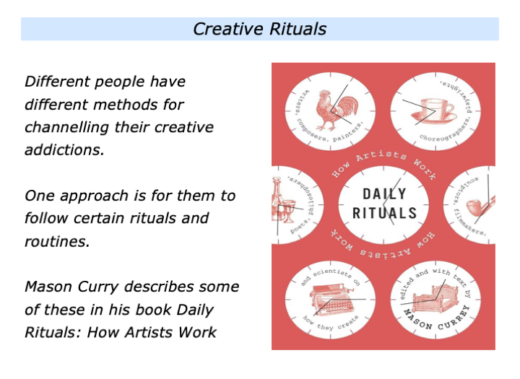
Siobhan Phillips reviewed the book and provides excellent insights into the lessons it gives. Here is an extract from her review inThe Believer magazine.
The accumulation of examples in Daily Rituals … shows how often artists resist the driven directive to “work work work.” The schedules described are regular, sure, but they’re almost always limited.
Most of the artists settle on a timetable that is consistent but abbreviated, with no more than four consecutive hours of creative activity.
Some prefer a single stretch, like Thomas Mann’s morning; some, like Simone de Beauvoir, fit in two sessions around a long lunch.
Those who spend more time in the office might keep “business hours” but write “for only a small portion of that time” – two hours, in Martin Amis’s case.
The maximum, according to Chuck Close, is “three hours in the morning and three hours in the afternoon.” To try for more might be not just difficult but also outright harmful.
At a moment when we’re working longer than ever – and, as we dutifully lean in, trying to feel inspired and empowered by working more – it’s useful to recall that many of the greatest minds planned to fritter away parts of their days, that their routines protected creativity by filling the time around a more or less fixed window of possible, genuine intensity.
Let’s return to your own life and work. How can channel your creative drives in ways that help you and other people? What will be the benefits of taking these steps?
If you wish, try tackling the exercise on this theme. This invites you to do the following things.
Describe the specific things you can do to channel your creative drives in the future.
Describe the specific benefits of channelling these drives in ways that help both you and other people.


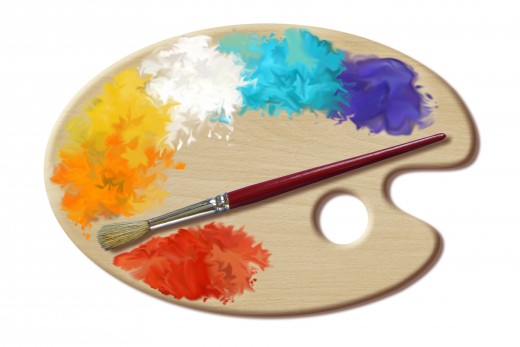
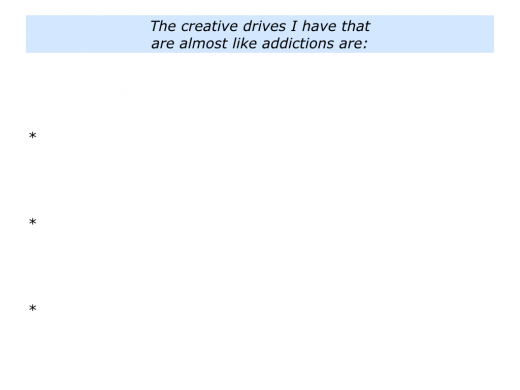
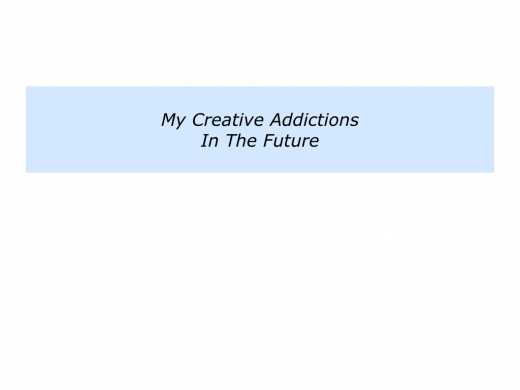
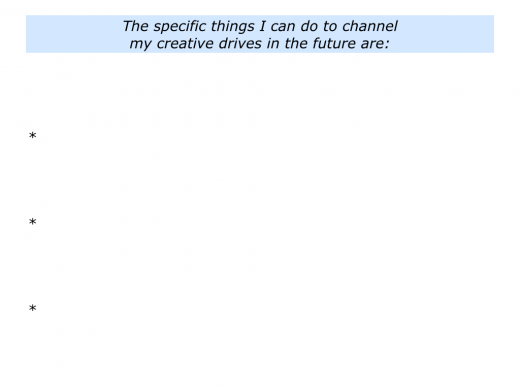
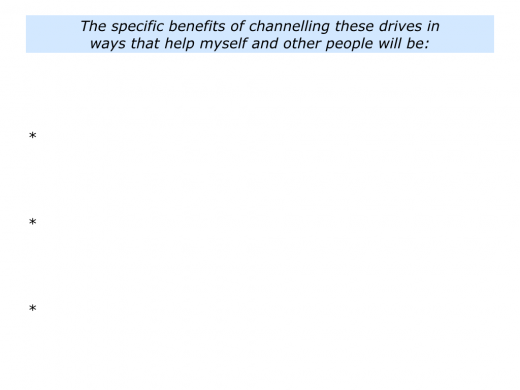




Leave a Reply